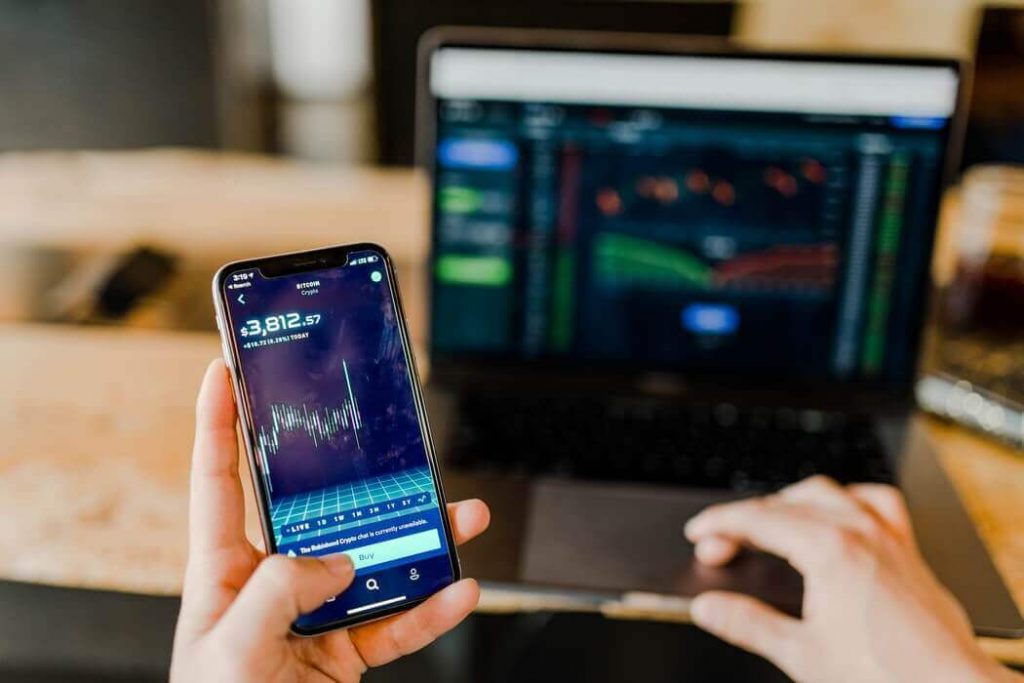Blockchain and Financial Regulation
Join over 2 million professionals who advanced their finance careers with 365. Learn from instructors who have worked at Morgan Stanley, HSBC, PwC, and Coca-Cola and master accounting, financial analysis, investment banking, financial modeling, and more.
Start for Free
The rise of blockchain and crypto-assets in 2017 caused significant headaches to regulators around the world. Price volatility, significant interest from retail and institutional investors alike, the launch of Bitcoin futures on major regulated exchanges along with a daily presence in mainstream media meant crypto-assets are becoming validated as a new asset class of their own.
In the traditional finance world, regulators oversee financial markets to make sure there are adequate rules in place that balance the interests of all parties involved. On one hand, they need to protect retail investors. These are private individuals who are potentially vulnerable due to their lack of experience and expertise in evaluating market risk and making investment decisions. On the other hand, regulators should also help maintain efficient and orderly capital markets that allow companies to raise enough capital to fund their operations, boost innovation and ultimately stimulate the economy.
This means the job of financial regulators is a really important and demanding one. They need to constantly keep up with new types of financial engineering and sometimes exotic structures and instruments like various financial derivative products and their risk profiles. They need to constantly keep a watchful eye on publicly traded corporations and institutional investors for potential mischief by their management, which can involve false accounting, insider or otherwise rogue trading, Ponzi or pyramid schemes, or other regulatory violations.
The list of examples in history is really long and the people’s creativity when money is on the line is unlimited.
We already mentioned some huge multi-billion-dollar scandals involving Enron, WorldCom, Bernie Madoff, and pretty much all major banks. Moreover, regulators need to be especially careful with large financial enterprises that can represent systemic risk, meaning that if they get in trouble this could endanger the entire financial and economic system. So, you can see that financial regulators have a huge responsibility and an important social mandate. Naturally, as the crypto-asset market is getting bigger, it has started to attract their attention. The open question now is how the balance between upholding investor protection and keeping technological innovation unhampered, can be preserved once again. And here, this is a very challenging task because blockchain crypto-assets are at the forefront of technology, finance, economics and legal science at the same time.
Certainly, the unsophisticated investor public needs to be protected. Just like in any other market, there is fraud and scams are being perpetrated. These things, unfortunately, have always been part of society. There is also irresponsible behaviour by market participants who have difficulty understanding the risks involved.
Well, the good news is that the crypto-assets market is not considered to pose a systemic risk. This is the common view among central banks around the world right now. This is due to its very small size compared to the global equity and debt markets.
How crypto-assets are treated in the existing regulatory framework, given the mix of currency, commodity and equity features they appear to have, is a totally different and complex question. On one side, everybody has heard of cryptocurrencies and uses this term to refer to the entire crypto-asset space. But they are not all currencies. Actually, commodities may be closer in their nature to the crypto assets, out of all the established asset classes. This is so, because their market value is determined by supply and demand for the utility or use case they enable. And this should be the case with many crypto-assets too. For example, the Ethereum tokens give access to the computational power of the Ethereum network and to data storage on the secure, immutable Ethereum blockchain. This looks like a real use-case, similar to many commodities in our modern economy. Think about oil, electricity and cargo or freight – these are all tradable commodities with substantial utility in the modern economy. Perhaps, Ethereum and some of its blockchain peers will follow suit. And how about Bitcoin? It is gaining a widely recognized status of “digital gold”. Its utility – store of value, medium of exchange and unit of account, is similar to that of gold or traditional currencies. The thing is that Bitcoin’s volatility profile is much closer to that of gold than to that of traditional currencies, which tend to be more stable. The Chicago Mercantile Exchange (or CME), one of the largest regulated financial and commodity derivative exchanges in the world, seems to share this view, evidenced by its listing of Bitcoin futures contracts in December 2017.
In contrast, the value of equities is fundamentally underpinned by the stream of future cash flows, the underlying business is expected to realize. This is not necessarily the case with most crypto-assets at present. Of course, traditional equity shares can be represented by tokens on the blockchain, as we already mentioned. This can be done with pretty much any asset.
And how about the venture capital aspect of crypto-assets, which at present, mostly represent stakeholder interest in start-up projects? And by stakeholder here we mean anyone with any interest in a venture or ecosystem. For example, the primary stakeholders in a typical corporation are its investors, employees, customers and suppliers.
The status of crypto-assets in the current market and regulatory landscape is an open and complex topic, which we, by no means, can cover completely here.
We’ll just mention that, when it comes to crypto-assets, the global regulatory environment is very diverse and is evolving dynamically. Some countries are more conservative, others are more open and liberal, just like with any other economic and political developments. In our view, the reasonable approach would be to have ongoing dialogue between regulators and market participants, so that everyone is on the same page and contributes towards an efficient outcome for society. It seems that many regulators and government authorities recognize the value of blockchain technology and want to gain a good understanding of it before further steps are taken. This approach makes sense and we can see some positive initiatives already taking place.
In April 2018, 22 countries in the European Union signed a Declaration on the Establishment of a European Blockchain Partnership.
Mariya Gabriel, Commissioner for Digital Economy and Society, was the person who promoted the partnership and stated that she believes in the technology’s potential to transform the digital world:
“In the future, all public services will use blockchain technology. Blockchain is a great opportunity for Europe and Member States to rethink their information systems, to promote user trust and the protection of personal data, to help create new business opportunities and to establish new areas of leadership, benefiting citizens, public services and companies. The Partnership enables Member States to work together with the European Commission to turn the enormous potential of blockchain technology into better services for citizens.”
This partnership will be a vehicle for cooperation among EU Member States to exchange experience and expertise in technical and regulatory fields and prepare for the launch of EU-wide blockchain applications across the Digital Single Market for the benefit of the public and private sectors. This will contribute to Europe continuing to play a leading role in the development and roll-out of blockchain technologies.
With that said, we’ll leave the regulatory conundrum open, and encourage everyone to be reasonable and try and understand blockchain technology for themselves before taking any action. Actually, this is exactly the aim of our educational materials and we’ll be extremely happy if we can contribute to the ongoing discussion and increase social awareness of blockchain technology in our own way.
